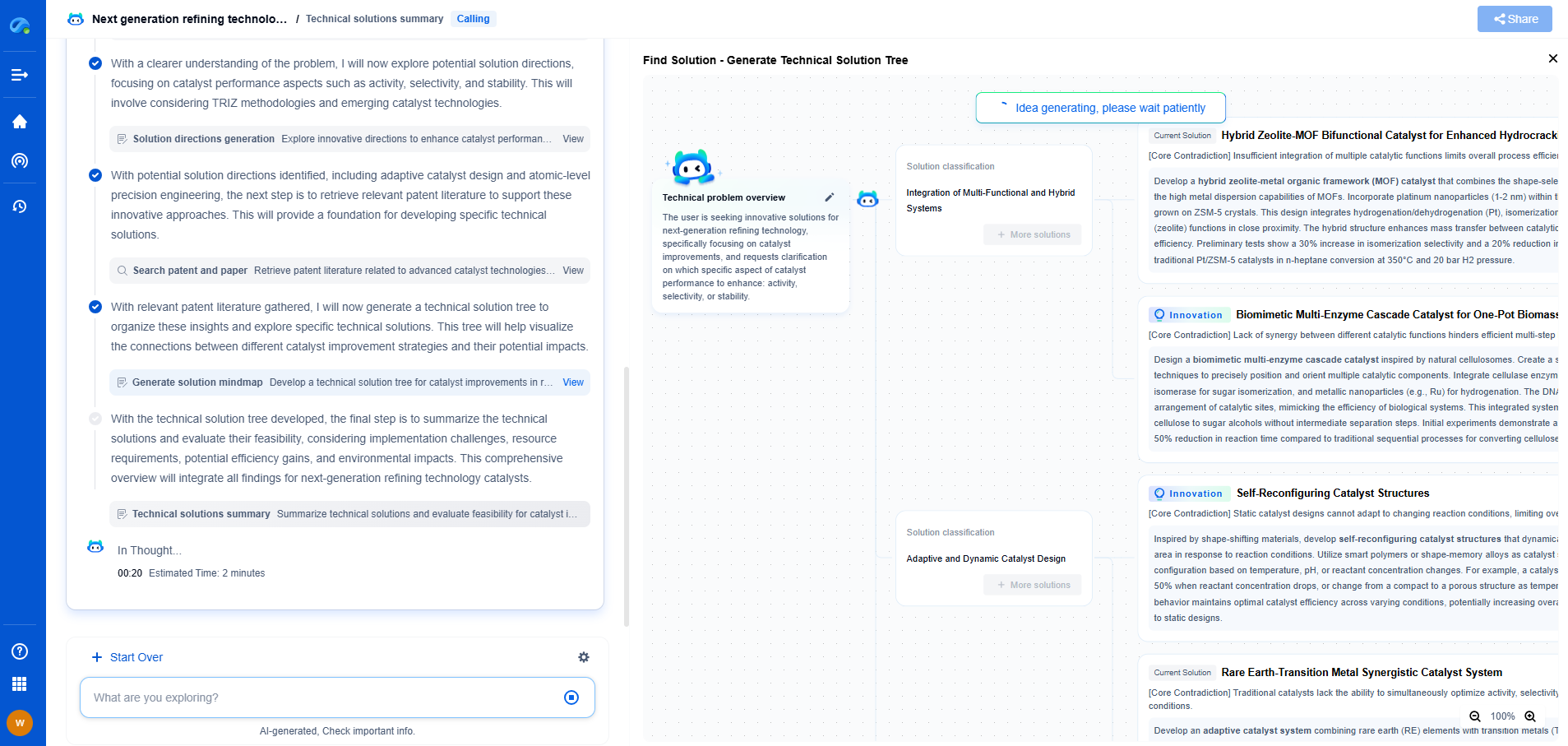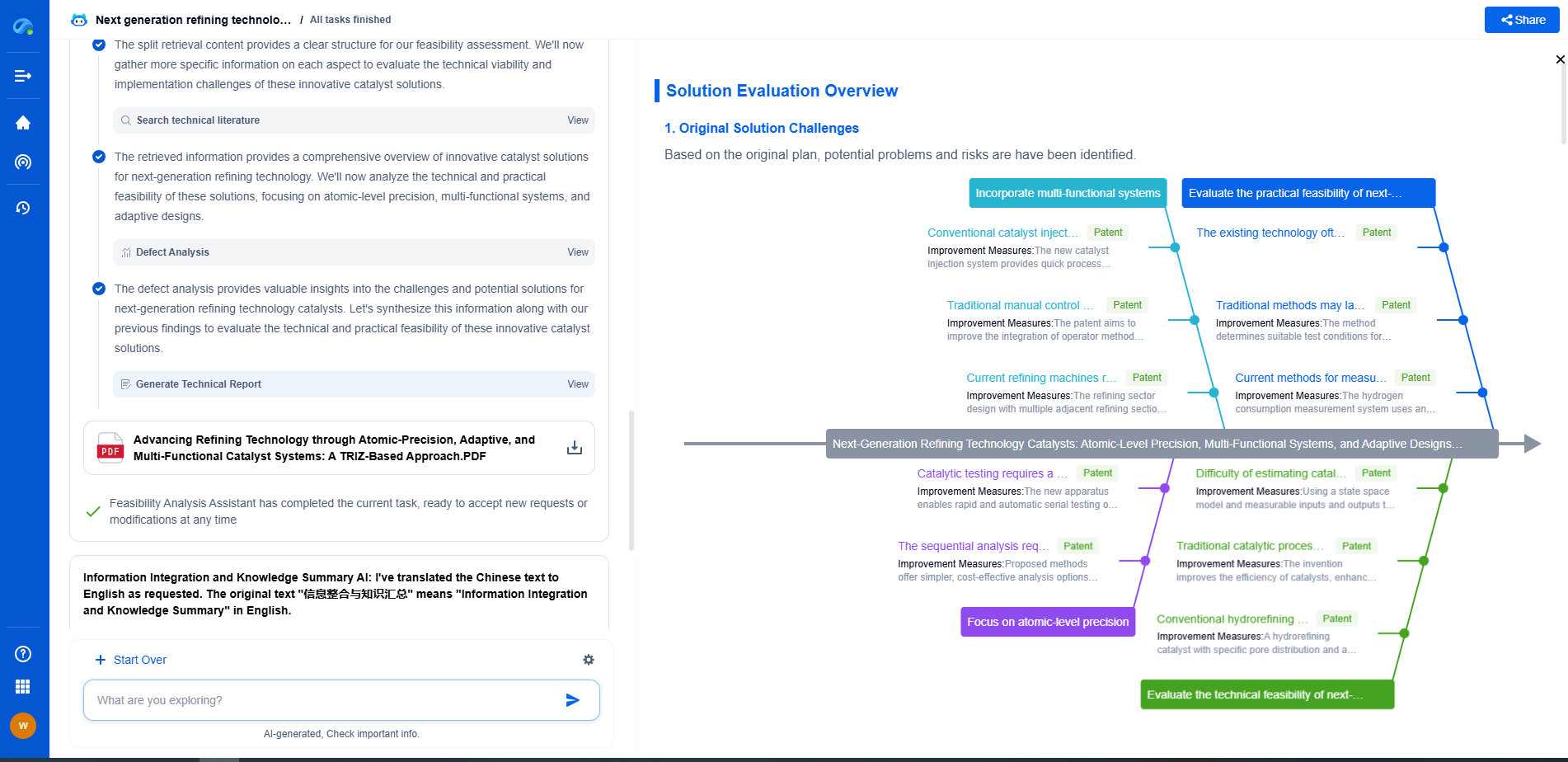What is a Weight and Bias in Neural Networks?
JUN 26, 2025 |
In the realm of artificial intelligence and machine learning, neural networks stand as a cornerstone technology, enabling a wide array of applications from image recognition to natural language processing. Central to the operation and success of neural networks are two fundamental components: weights and biases. In this blog, we will explore what these terms mean, how they function within neural networks, and why they are essential for training models.
Introduction to Neural Networks
Neural networks are inspired by the human brain and are structured as layers of interconnected nodes or neurons. Each layer in a neural network transforms the input data into slightly more abstract and composite representations. When a neural network is trained, it learns to adjust its weights and biases so that the output layer produces the desired results. But what exactly are weights and biases?
What are Weights?
Weights are numerical values attached to the connections between neurons in adjacent layers. They serve as the primary parameters that a neural network learns during training. The weight determines the strength and significance of the input data being fed into a neuron. In essence, weights control the signal flowing between neurons; a higher weight increases the contribution of the input to the neuron's output, while a lower weight decreases it.
Mathematically, weights can be thought of as coefficients in linear equations. When an input is presented to the network, each weight is multiplied by its corresponding input value. These products are then summed up, forming the weighted sum, which is then passed through an activation function that decides the neuron's final output.
What is Bias?
Bias is an additional parameter in neural networks that is used to adjust the output along with the weighted sum of the inputs. It allows the activation function to be shifted to the left or the right, which can be crucial for the learning process. By introducing bias, a neural network can fit the data better by introducing additional flexibility.
In simple terms, the bias can be viewed as the y-intercept in a linear equation. Just as an intercept allows a linear function to not necessarily pass through the origin, a bias allows the activation function in a neuron to be offset. This feature is particularly useful when the data is not centered around the origin, allowing the network to capture patterns more effectively.
The Role of Weights and Biases in Training
Both weights and biases are essential for a neural network to learn from data. During the training process, using a technique known as backpropagation, the neural network iteratively adjusts these parameters to minimize the difference between its predictions and the actual data. The optimization is typically performed using algorithms such as stochastic gradient descent.
When a neural network is initialized, the weights and biases are usually set to small random numbers. As the training progresses, these values are updated based on the errors observed in the output compared to the expected results. Over time, this adjustment process allows the network to learn intricate patterns and make accurate predictions.
Practical Implications of Weights and Biases
Understanding the influence of weights and biases is crucial for designing effective neural networks. For instance, initializing weights is an important step, as poor initialization can lead to slow convergence or getting stuck in local minima. Similarly, biases should be carefully managed to ensure they contribute effectively to the network's learning capacity.
Moreover, different layers in a neural network might require different configurations of weights and biases based on their role in the model. For example, convolutional layers in convolutional neural networks (CNNs) handle spatial data differently compared to fully connected layers, impacting how weights and biases are applied and adjusted.
Conclusion
Weights and biases are pivotal in the functionality and training of neural networks. They work in unison to adjust the input data, allowing the model to learn from patterns and make predictions. A firm grasp of these components not only enhances one's understanding of neural networks but also equips them to build more efficient and effective models. As we continue to advance in machine learning and artificial intelligence, the refinement and application of weights and biases will remain a fundamental area of focus.
Unleash the Full Potential of AI Innovation with Patsnap Eureka
The frontier of machine learning evolves faster than ever—from foundation models and neuromorphic computing to edge AI and self-supervised learning. Whether you're exploring novel architectures, optimizing inference at scale, or tracking patent landscapes in generative AI, staying ahead demands more than human bandwidth.
Patsnap Eureka, our intelligent AI assistant built for R&D professionals in high-tech sectors, empowers you with real-time expert-level analysis, technology roadmap exploration, and strategic mapping of core patents—all within a seamless, user-friendly interface.
👉 Try Patsnap Eureka today to accelerate your journey from ML ideas to IP assets—request a personalized demo or activate your trial now.
- R&D
- Intellectual Property
- Life Sciences
- Materials
- Tech Scout
- Unparalleled Data Quality
- Higher Quality Content
- 60% Fewer Hallucinations
Browse by: Latest US Patents, China's latest patents, Technical Efficacy Thesaurus, Application Domain, Technology Topic, Popular Technical Reports.
© 2025 PatSnap. All rights reserved.Legal|Privacy policy|Modern Slavery Act Transparency Statement|Sitemap|About US| Contact US: help@patsnap.com

